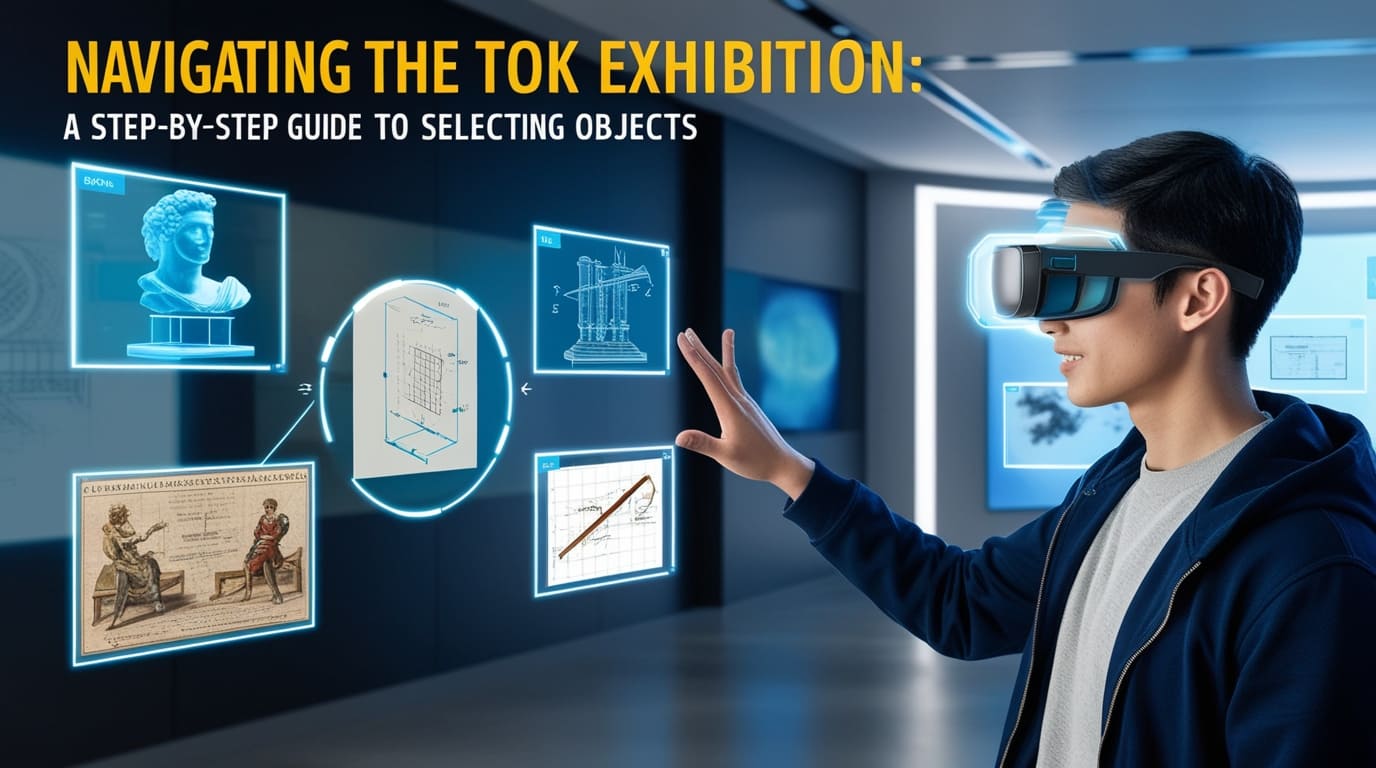The Theory of Knowledge (TOK) exhibition is vital to the International Baccalaureate (IB) Diploma Programme. It challenges students to demonstrate their understanding of how knowledge is deciphered and communicated. One key task in the TOK exhibition is selecting objects that effectively illustrate the chosen prompt.
This guide will walk you through a step-by-step process to help you navigate this task successfully.
Before selecting objects, it's crucial to understand the purpose of the TOK exhibition. The exhibition showcases how TOK manifests in the real world by exploring knowledge questions. You must choose three objects and explain their relevance to a specific TOK prompt. Your objects should be diverse and thought-provoking. They should encourage viewers to consider different perspectives on the knowledge question.
The first step in your TOK exhibition journey is selecting a compelling prompt from the list provided by the IB. The prompt is the foundation for your exhibition, guiding your choice of objects and shaping your analysis. Consider the following when choosing your prompt:
Examples of TOK prompts include:
Once you've chosen your prompt, brainstorm potential objects that express the prompt effectively. Your objects can be anything from physical to digital artefacts, but must be tangible and accessible. Here are some categories to consider:
With a list of potential objects handy, evaluate each to determine its suitability for the exhibition. Consider the following criteria:
After evaluating your potential objects, select the three that best meet the criteria. Your final selection should offer a balanced and comprehensive exploration of the prompt. Here are some tips for choosing the best objects:
With your objects selected, conduct thorough research to gather information about each one. Your research should focus on:
The next step is to develop a cohesive narrative for your exhibition. Your narrative should guide viewers through your objects and explain how each relates to the TOK prompt. Here are some tips for crafting your narrative:
The TOK exhibition requires both visual and written components. Ensure your visual presentation is clear, engaging, and effectively supporting your narrative. Here are some elements to consider:
Before finalising your exhibition, seek feedback from your peers, teachers, or mentors. They can offer valuable insights and suggestions for improvement. Consider the following:
After incorporating feedback, finalise your exhibition. Ensure all components are professionally presented. Practice confidently explaining your objects and their connections to the prompt.
The TOK exhibition is an opportunity to show your understanding of how you have understood knowledge. You can create a compelling exhibition by selecting objects and developing a cohesive narrative. Remember to stay true to your interests, explore diverse perspectives, and engage deeply with the TOK concepts. With careful planning and execution, your TOK exhibition can highlight your IB journey, showcasing your critical thinking skills and understanding of the nature of knowledge.
The TOK (Theory of Knowledge) exhibition is a key component of the IB Diploma Programme where students demonstrate their understanding of knowledge questions through the selection and presentation of objects.
Students are required to select three objects for the TOK exhibition. These objects should effectively illustrate and explore a specific TOK prompt chosen by the student.
When selecting a TOK prompt, consider your personal interest, the depth and breadth of exploration possible, and its relevance to your experiences and the world around you. Choose a prompt that inspires curiosity and allows for meaningful analysis.
© Knowledgeum
